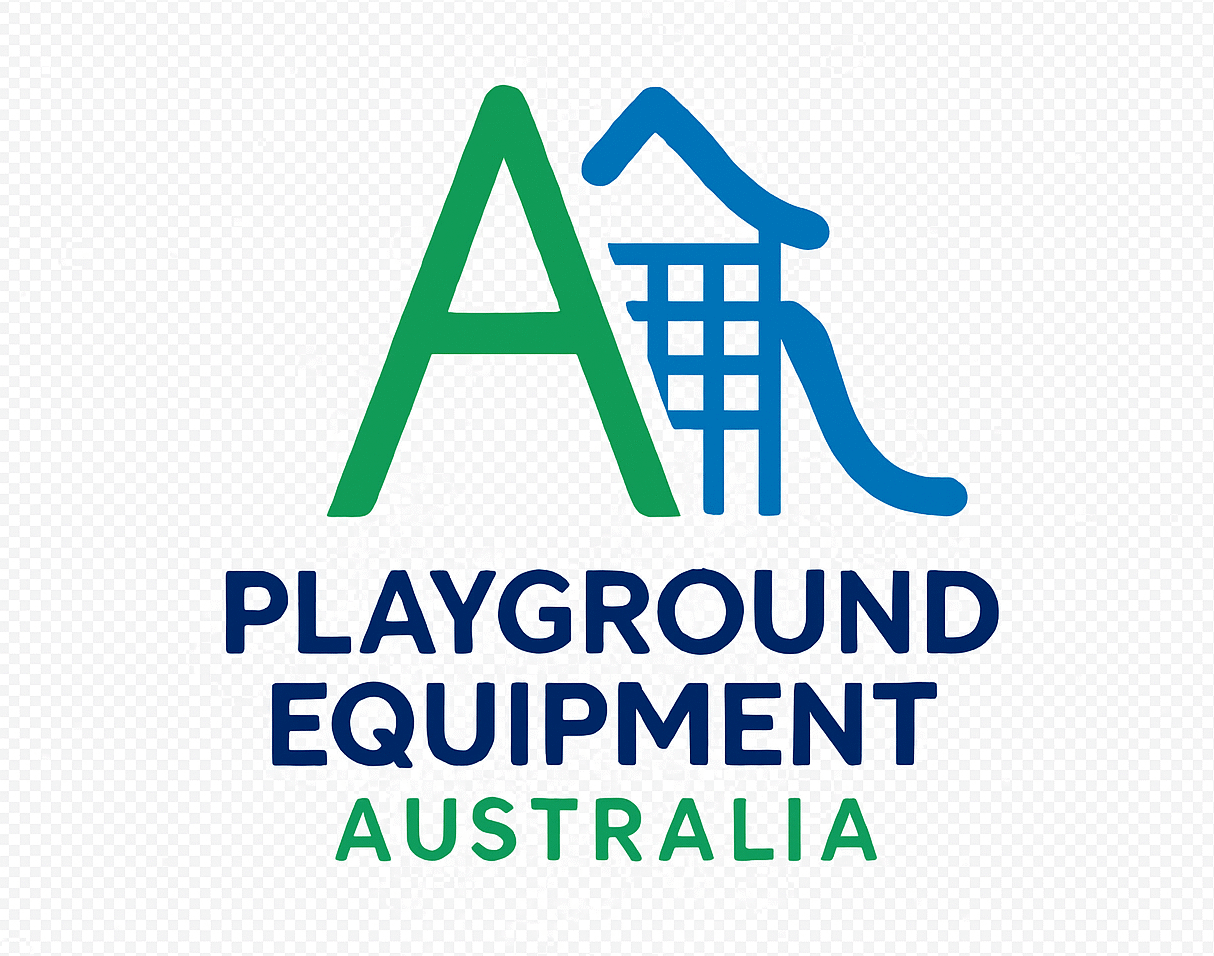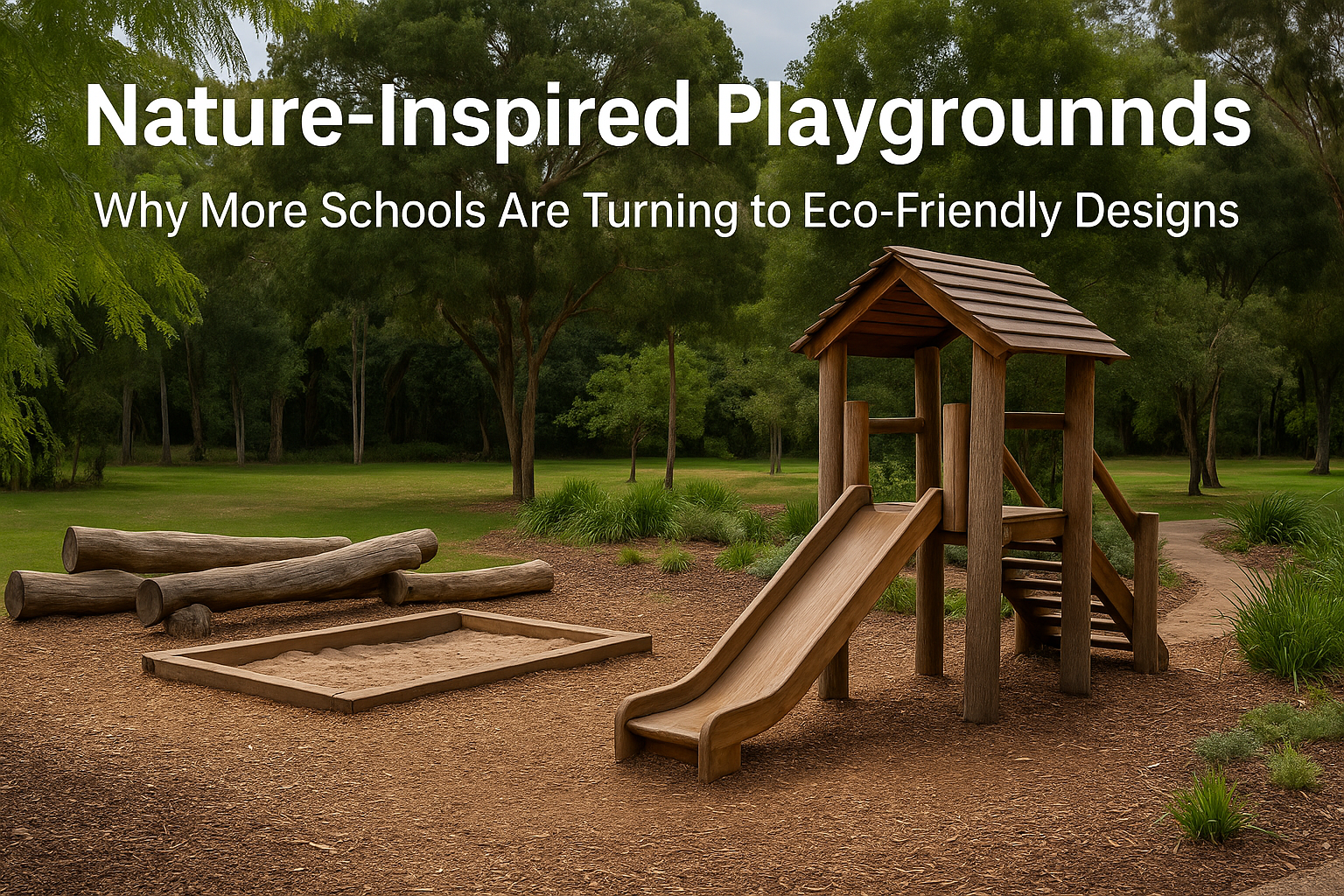Rethinking Play: Why Nature Is Back in Focus
As screen time increases and concrete spaces dominate schoolyards, educators and parents are seeking alternatives that reconnect children with the natural world. Enter nature-inspired playgrounds — environments that blend natural materials, organic shapes, and sensory-rich features to foster holistic development.
These eco-conscious designs go beyond aesthetics. They reflect a growing understanding that contact with nature supports mental health, encourages physical activity, and helps children develop problem-solving and risk assessment skills — all vital for 21st-century learners.
The Benefits of Nature-Inspired Playground Design
1.Boosts Emotional and Social Development
Children who play in natural environments tend to show improved mood, reduced stress, and more cooperative play. Logs, rocks, and vegetation invite imaginative group interactions rather than competitive behaviour.
2.Enhances Physical Engagement
Natural terrains — uneven surfaces, inclines, balancing beams — demand full-body movement. Kids climb, crawl, jump, and explore without realising they’re developing balance, coordination, and strength.
3. Encourages Curiosity and Creativity
A stick becomes a sword. A tree stump becomes a throne. Open-ended materials and varied textures encourage storytelling and cognitive engagement beyond what traditional plastic sets can offer.
4. Promotes Environmental Awareness
When children interact with leaves, soil, water, and bugs, they begin to understand ecosystems and develop empathy for the environment. This early connection often leads to eco-conscious adults.
What Elements Make a Nature-Inspired Playground?
Nature play isn’t limited to forests. Even an urban school can embrace natural design through:
- Timber balance beams and climbing logs
- Boulder mounds or dry riverbeds for play and seating
- Plant tunnels or willow dens
- Mud kitchens and sand pits with water access
- Loose parts: bark chips, branches, pinecones
- Sensory gardens with herbs and textures
Explore our Wooden Structures for Nature Play
Are Plastic Playgrounds Still Relevant?
Absolutely. While nature-inspired designs lead in sensory richness, modern plastic structures — especially those made from fade-resistant HDPE or recycled plastics — offer crucial benefits:
- Low maintenance in all weather
- Bold colours that attract attention
- Modular systems that allow budget-friendly upgrades
Many of our clients combine both: using timber and rock for core play zones and adding plastic slides, tunnels, and bridges for function and fun.
See our Commercial Playground Range
Case Studies: Schools Leading the Way in Australia
Victoria: Coastal Primary School
Replaced outdated metal units with climbing logs, native plants, and a sensory sand zone. Used modular plastic slides for budget and safety balance.
New South Wales: Community Kindergarten
Created a nature trail with log steps and vine tunnels. Added colourful plastic towers to enhance visibility and access.
Getting Started: Planning an Eco-Friendly Playground
Even without a big budget, your school can start small:
Step-by-Step Strategy
- Audit existing space — shade, slopes, existing trees
- Consult stakeholders — teachers, children, grounds staff
- Start with one natural zone — logs, garden, or loose parts
- Mix in modular plastic features for safety and engagement
- Phase development over terms or budget years
Budget Tip:
Start with versatile wooden kits or recycled-plastic climbers that grow with your site.
Browse our Outdoor Fitness and Modular Kits
Download Our Free Eco Playground Planning Guide
Get a printable checklist, budget template, and design inspiration board to kickstart your school’s green play journey.
Download the Eco Playground Planner PDF
Frequently Asked Questions
Q: Are natural playgrounds safe for schools?
A: Yes, especially when built with certified timber and soft-fall surfaces. All our components meet Australian safety standards.
Q: Can plastic play equipment be eco-friendly?
A: Absolutely. Many of our plastic products use recycled materials and are fully recyclable.
Q: What’s the ideal age group for nature-based play?
A: Most elements suit ages 2–12, and we customise for early learning through upper primary needs.
Final Word: Blending Nature and Innovation
Creating an eco-friendly playground isn’t about abandoning modern design. It’s about thoughtful integration — giving children an environment that reflects the real world while inspiring creativity and movement. Whether it’s timber logs or HDPE slides, the right mix can transform any space into a nurturing play haven.
Need help choosing the right mix for your school? Contact us for a free consultation.



